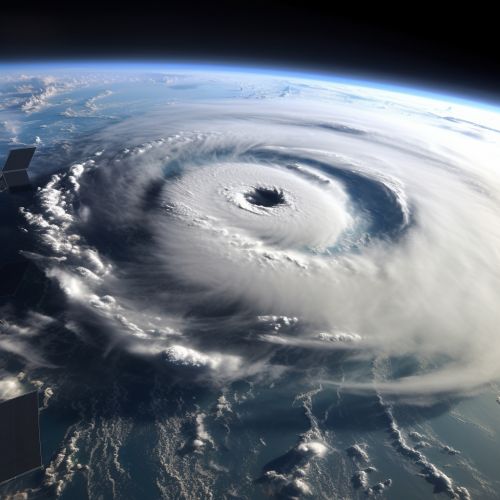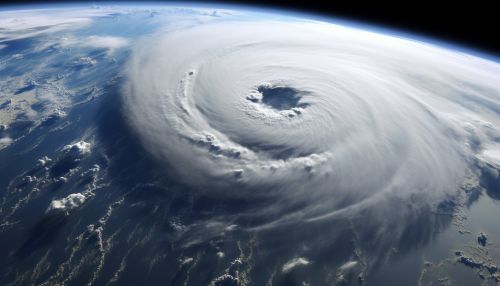Cyclone
Introduction
A cyclone is a large scale air mass that rotates around a strong center of low atmospheric pressure. Cyclones are characterized by inward spiraling winds that rotate about a zone of low pressure. The largest low-pressure systems are polar vortices and extratropical cyclones of the largest scale (the synoptic scale). Warm-core cyclones such as tropical cyclones and subtropical cyclones also lie within the synoptic scale.
Classification
Cyclones are classified into three main types: tropical cyclones, extratropical cyclones, and tornadoes.
Tropical Cyclones
Tropical cyclones, also known as hurricanes or typhoons, are the most powerful and destructive type of cyclone. They form over warm ocean waters near the equator and are characterized by heavy rain, strong winds, and a well-defined circular shape. Tropical cyclones derive their energy from the evaporation of sea water, which is recondensed when the moist air rises and cools.
Extratropical Cyclones
Extratropical cyclones, also known as mid-latitude cyclones, form in the middle and high latitudes, away from the equator. They are driven by the temperature contrast between warm and cold air masses. Extratropical cyclones can bring a variety of weather conditions, including rain, snow, wind, and temperature changes.
Tornadoes
Tornadoes are a type of cyclone that occurs over land. They are smaller and shorter-lived than other types of cyclones, but they can be extremely destructive. Tornadoes form from severe thunderstorms and are characterized by a rapidly rotating column of air that is in contact with both the surface of the Earth and a cumulonimbus cloud.
Formation
The formation of a cyclone involves several stages, including the initial disturbance, the organizing stage, the mature stage, and the dissipation stage.
Initial Disturbance
A cyclone begins as a disturbance in the atmosphere, such as a thunderstorm or a cluster of thunderstorms. This disturbance creates an area of low pressure, which causes the surrounding air to start rotating.
Organizing Stage
During the organizing stage, the rotating air mass begins to take on a more organized structure. The air in the center of the disturbance rises, creating an area of low pressure at the surface. This causes more air to be drawn into the system, which strengthens the rotation.
Mature Stage
In the mature stage, the cyclone reaches its peak intensity. The system is characterized by a well-defined eye, a ring of towering thunderstorms known as the eyewall, and spiral bands of thunderstorms that extend outward from the center.
Dissipation Stage
During the dissipation stage, the cyclone begins to weaken and eventually dissipate. This can occur for a variety of reasons, including landfall, interaction with cooler waters, or wind shear.
Impacts
Cyclones can have significant impacts on the areas they affect. These impacts can include high winds, heavy rain, storm surge, and tornadoes. In addition, cyclones can cause significant damage to infrastructure and property, and can result in loss of life.
High Winds
One of the primary impacts of a cyclone is high winds. These winds can cause significant damage to buildings and other structures, and can result in power outages and other disruptions.
Heavy Rain
Cyclones often bring heavy rain, which can lead to flooding. This can cause damage to homes and infrastructure, and can result in loss of life.
Storm Surge
A storm surge is a rise in sea level that occurs during a cyclone. This can result in coastal flooding, which can cause significant damage and loss of life.
Tornadoes
Cyclones can also spawn tornadoes, which can cause significant damage and loss of life.
Mitigation and Preparedness
There are several strategies for mitigating the impacts of cyclones and preparing for their arrival. These include building codes designed to withstand high winds, evacuation plans, and early warning systems.
See Also


